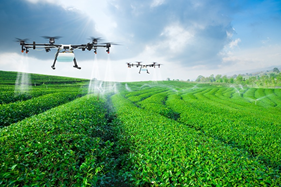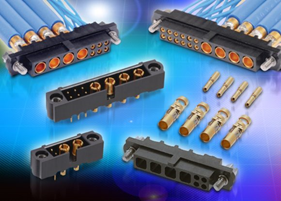By browsing the mass media, you can easily think of a lot of drones flying in the sky. These small aircraft have been used in the military field for decades, initially as bait aircraft and later for reconnaissance, logistics, data collection and other tasks. In the past few years, the use of drones has grown exponentially, and so has its scope. In addition to the great interest in drones in the consumer market, a key factor in this high growth is its greater value in commercial and industrial applications. Conversely, according to the development curve familiar to the technology market, the increasing adoption will lead to greater economies of scale, which will lower prices and further expand its application.
Most media attention to drones is concentrated in consumer applications (or more commonly misuse). However, the emerging applications in the industrial and commercial sectors are the most noteworthy, because drones have access to places that humans (or other types of machines) simply cannot access.
Humanitarian organizations and rescue services have been using drones to investigate areas of traffic disruption after natural disasters. Over the past few years, drones have been proven to be very helpful in assessing the damage caused by hurricanes in the Pacific islands of Vanuatu, assessing road conditions after the Ecuadorian earthquake, and by comparing images before and after the hurricane in Haiti to determine how many houses need to be rebuilt. . Drones can also enter the collapsed buildings caused by disasters, helping to accurately locate trapped people.
Other industries that use drones include agriculture, mining, oil/gas and construction, and logistics/distribution is also a very compelling area. In 2016, DHL attempted to provide medical supplies and other small parcel services to remote villages in Bavaria, which were difficult to reach in traditional areas, especially given the meteorological challenges facing the area. At that time, the attempt was coordinated by the German Federal Ministry of Transport (BMVI) to set up a restricted flight zone for testing, and the Bavarian Aviation Authority approved the flight permit.
Last year, the German government introduced special drone legislation, which has many similarities to the US Federal Aviation Administration's August 2016 regulations. This legislation limits any unmanned aerial vehicles (UAVs) that are out of sight and directly limits the scope of use. At the same time, there are provisions that allow for some runs to be exempted when deemed safe, opening up space for more advanced commercial/industrial operations in some cases.
Farmers also benefited greatly from the development of drones. Market analyst firm IDTechEx predicts that the value of "smart agriculture" will exceed $420 million in 2028. For example, Japan has relied on unmanned RC helicopters to spray rice fields since the early 1990s. Precision control technology helps to reduce the amount of chemicals required, and the entire process can be better guided, and the environmental impact is significantly reduced.

Agricultural drone spraying fertilizer on green tea field / source network
In the field of construction, mapping is an important task that drones need to accomplish. UAVs can be used to quickly inspect bridges or high-rise buildings, otherwise cranes will be required, which will take a lot of time and cost. Komatsu, a multinational company based in Japan, used drones to scan construction sites to help overcome the shortage of builders. They first generated images from computers and then deployed unmanned bulldozers and excavators to dig holes and transport earth and stone. Drones can also help monitor progress on the construction site, such as regularly scanning projects and providing audit trails. Any minor improvement in construction efficiency can offset some of the material waste common in the construction industry.
For telecommunications companies, drones are also very beneficial for deploying network infrastructure in areas that are desolate or where vehicles are not accessible. This was illustrated by a case that occurred a few months ago, when high-speed broadband cable racks were needed to be sent to the village of Pontfadog in northern Wales. A small drone is connected to a light-weight line to a densely populated house on a steep hill. Once these lines are in place, the cable can be pulled over, and the drone is pulled directly to the cable itself.
All of these examples show that high quality components are needed to support this emerging technology area. The operating environment of drones is often demanding and has to cope with harsh environmental conditions, high vibrations and potentially significant impacts. There is also a need to consider factors in terms of size and weight. Ensuring the successful operation of drones means that while miniaturization is important, the electronics used must also exhibit the highest level of robustness.

Datamate Mix-Tek Connector / Diagram Source Network
The reduction in component size and weight is clearly beneficial for drones that are themselves limited by these parameters. The small size of the drone naturally limits the payload they can carry, so the use of small, light components means that such a drone will have a higher payload capacity and can cover a larger range before recharging. Harwin's high-reliability connector and cabling solutions combine compactness with a rugged, lightweight construction to ensure the necessary power and data performance is delivered without adding any unnecessary volume. The slim 1.25mm pitch Gecko series is a high performance alternative to traditional miniature D connectors. Metal backshells can also be installed if needed to add extra protection and shielding. With the introduction of the newest member of the Gecko-SL, which can be screw-locked in this product range, higher vibration resistance reliability can be achieved. To maintain the light weight of the harness, the Datamate Mix-Tek Series provides power, signal and RF contacts inside the same compact enclosure. These connectors are rated for 20A or 40A per contact.
UAVs are increasingly being used more and more widely in various industries around the world and will continue this trend for a long time to come. Regardless of how relevant legislation and regulations are developed, this technology is likely to play an increasingly important role in the commercial and industrial sectors. The wide range of applications of drones can be seen in the areas that we humans can imagine.
The pin refers to the connection between the internal circuit of the integrated circuit (chip) and the peripheral circuit, and the pin constitutes the interface of the chip. According to the function, the pins of AT89S52 can be divided into four categories: main power supply, external crystal oscillator or oscillator, multi-function I/O port, and control, strobe and reset.
Terminal Pins,Terminal Hardware Pin,High Precision Terminal Pins,Terminal Pins For Pcb
Sichuan Xinlian electronic science and technology Company , https://www.sztmlchs.com